Although I visited Colorado now and then for over 15 years before making Colorado my home, there has been a learning curve in acclimating after moving here. In a short time, I’ve learned a lot that would be beneficial for travelers to know.
I have lived in Iowa (19 years), Nebraska (13 years), and Arizona (5ish years), and currently, I am in Colorado Springs, Colorado since December 2022. I’m sharing my experiences to help first-time visitors know what to expect so they are prepared to make the most of their trip to Colorado.
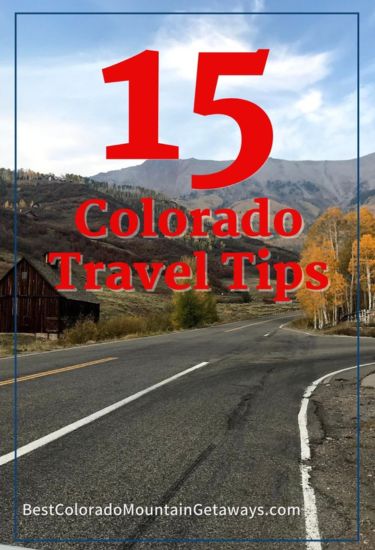
1. Elevation & the Importance of Hydration
If you are coming from the Midwest or somewhere with a lower altitude, the elevation in Colorado WILL catch up to you! Especially if you are on a week-long vacation. Denver, where most people arrive, is the mile-high city at an elevation of 5280 feet. Colorado Springs is an elevation of 6035 feet. You will need to drink a lot more water here than you think in Colorado!
When I moved here from Arizona, I realized on day 5 that I wasn’t keeping up with water. I’ve had water drinking habits for a long time & was drinking the usual amount that I was drinking in Arizona where it is super dry. But I wasn’t just feeling dehydrated. I was PARCHED! I realized that although I’ve been coming to Colorado for years, I never stayed in Colorado longer than a long weekend up to 4 days. I’ve always equated being slightly dehydrated to traveling or drinking alcohol, which are legitimate factors. But this time I wasn’t doing anything. I was so so sooooooooooo thirsty!
After moving to Colorado Springs and being here three weeks, we flew back to Arizona and got married, and drove back and the same thing happened around day 5. Incredible unquenchable thirst! Do yourself a favor and start early in the day and make sure you’ve located a source of water to support you and your family during your trip.
Limiting caffeine and alcohol will help you stay hydrated. I hate saying this because it’s honestly just a fun killer. I like to enjoy a happy hour to start off my vacations. Avoid or at least limit yourself to one drink on the first day here and you will thank yourself later.
2. Altitude Sickness Precautions
The air is thinner with less oxygen at high elevations, making altitude sickness common for visitors. About 40% of visitors to Colorado experience some form of altitude sickness symptoms.
Symptoms of altitude sickness include headaches, nausea, fatigue, difficulty sleeping, vomiting, loss of appetite, rapid pulse, shortness of breath, and diarrhea. Altitude sickness can happen immediately or can take up to three days to set in.
You are at higher risk for altitude sickness if you live in an area below 3300 feet. Other common risks are genetics, having a pre-existing respiratory condition, or previously experiencing altitude sickness.
If you arrive by flight, there is less time for adjustment compared to driving to Colorado and gradually increasing elevation. If you are planning on going to a high-elevation destination such as Vail, Breckenridge, or Crested Butte, it will help to stay your first night in Denver or Colorado Springs so you have time to adjust.
You may want to get some oxygen to keep with you as a backup or emergency precaution. You can find these at local grocery stores or pharmacies.
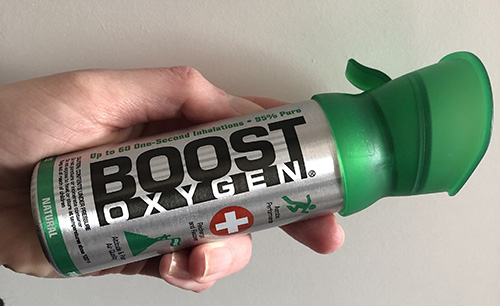
If you are visiting with older family members or are at a higher risk for altitude sickness, consider renting an oxygen concentrator. You can get them from Alpine Oxygen who even delivers to help people who need support to enjoy their trip more comfortably.
Delivery & Rental Locations of Alpine Oxygen Concentrators
3. Elevation Affects Physical Performance
Colorado’s elevation brings an unwelcome realization that even if you are in good physical shape, you may experience being out of breath quicker on easy trails and stairs here. You may feel like you aren’t able to perform physical activities at the same level you are used to. If you start to question yourself and your abilities, consider the elevation. Be nice to yourself…it’s not you, it’s Colorado!
I invite you to allow yourself the opportunity to rest and keep it low-key for a day or two after arriving in Colorado. If you are doing a hike, especially a 14er, I would recommend planning to be here a 24-48 hours minimum to acclimate and rehydrate.
When I visited Jorge in Golden while we were dating & living in different states, I would fly from Phoenix to Denver (DIA) and climb the stairs to the 3rd floor of his apartment within two hours from landing. My legs felt like lead by the top and I was breathing hard. It takes at least a few hours to adjust to the mile-high city. On one trip when I came in early morning, we drove from Denver to Colorado Springs right after I arrived. I didn’t do any stairs for about 8 hours that day and it didn’t feel as challenging.
Another example I have after moving from Phoenix to Colorado Springs happened at my desk job where I am on the phone most of the day. I noticed the first week that if I walked around too much during my calls, I was getting embarrassingly out of breath. Let me just put myself on mute really quick while I try to catch my breath and be professional! It took a few weeks for me to feel acclimated.
3. Remember Sunblock & Chapstick
The sun is stronger in Colorado because of the high elevation. Colorado has a dry desert climate. Sunblock is needed for time out in the sun year-round. Remember a hat and a keep light long sleeve layer to cover up if you spend more than a half hour in the sun. If you neglect this early in your trip, a sunburn will put a damper on your enjoyment of other outdoor activities.
In late April we had a blizzard on Friday in Colorado Springs and then on Sunday, I got an unsightly burn from a few hours soaking up the sun at a beer garden at 58 degrees. It was a lobster red painful & peeling burn that lasted over a week. Even Jorge who has a darker complexion than I do got burned.
4. Unpredictable weather like you’ve never experienced. Dress in layers.
Mountain weather changes fast. Bring layers and be prepared is the short summary of Colorado weather. Especially if you do a long hike at a high elevation. It snows and rains frequently up in the mountains, so you want to be ready. The temperature at the top of the 14ers is up to 30-40 degree difference from the base.
We get a lot of sun here which can be deceiving once the weather shifts or the wind picks up. You may leave home feeling warm and not think a jacket would be necessary only to find out that it is raining or snowing.
Warm vests make a great compliment to keep you warm and regulate temperature without carrying a puffy coat. One thing I love about Colorado is how casual it is. Jeans and a flannel shirt or sweater are acceptable at all times of the year. Stocking hats with swimwear is also a common fashion statement as you can enjoy hot tubs and hot springs year-round in Colorado.
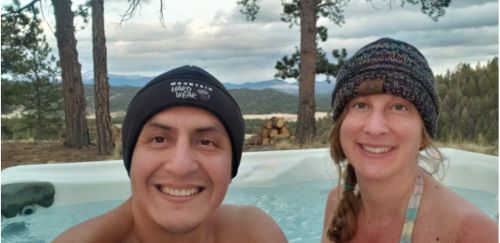
Also, don’t be surprised that locals wear shorts year-round here at temperatures far lower than I would expect. When I lived in Arizona, natives would be in boots and sweaters at 70 degrees. In contrast, in Colorado, you will regularly see people here and there wearing shorts comfortably in 30-degree temperatures.
5. Arriving in Colorado by Airport
Denver International Airport (DIA) is the most common choice to travel to Colorado. I spent a lot of time in DIA before moving to Colorado. DIA is under ongoing construction in different areas. There are a ton of food options and shops available even with some good organic options if you take the time to search. The baggage claim area is in several sections separated by brick walls. The signage could be a bit better in my opinion.
Colorado Springs airport is much smaller and has a more relaxed small-town vibe in comparison, especially if you like smaller airports. It is a very chill airport with only 12 gates and is far less crowded.

The flight from Denver to Colorado Springs is a common layover coming to Colorado. It is a less than 25-minute flight. In comparison, the drive is a little over an hour, depending on your destination. By the time you go through a layover to switch and board flights, you could be on your way sooner by renting a vehicle from DIA, in my opinion. If you don’t want to deal with a rental in a big airport and want a smaller town feel for comfort, the flight to the Springs may be worth it. Another factor is that high winds and other changing weather conditions make delays a stronger possibility in Colorado which guarantees a double delay on this common flight. I experienced this on a work trip which made for an unwelcome long travel day.
6. Travel & Rental Vehicle Information
If you’re headed to Colorado primarily for skiing and won’t be using a rental vehicle other than to reach your specific destination, there are shuttle options. If flying into DIA, you can take the airport rail to Denver Union Station and vice versa for $10.50 each way. From there, you can take a mountain shuttle with Plan B Transportation or Peak1 Express to get to Steamboat Springs or any other high-altitude resort. Fresh Tracks Transportation is another option for getting to ski towns without a rental car. The Colorado Department of Transportation (CDOT) has also dispatched a fleet of purple buses called Bustang that follow Interstate 70 and have eight stops, including Frisco, Vail, and Glenwood Springs.
Most likely you will need a rental vehicle unless you plan on staying in the Denver area. In Denver, you can get around using public transportation options and ride shares more easily whereas Colorado Springs is smaller but more spread out and not as accessible.
Rental vehicles can be found at one of the major airports in Colorado, such as Denver International Airport or Colorado Springs Airport. These locations have a variety of rental car agencies, such as Enterprise, National, Avis, Budget, and Hertz. Smaller airports like Durango-La Plata County Airport or Eagle County Regional Airport also offer rental car options.
Should I rent a 4WD vehicle?
It depends on the time of year, where you are going, and what activities you are looking to do. In the summer a car would be fine. You could get by in Denver with a car, but in Colorado Springs, there are a lot more frequent changes in elevations on the streets. The Springs are built more into the mountains where Denver elevation changes are more gradual. I am grateful Jorge drives a jeep or I might be stuck home a lot. A lot of cars get stuck in the snow during winter storms.
In the spring it can snow in Colorado into May & June but it will melt quickly then. In the fall, snow can come in September. Some seasonal roads are closed from November through May. In the winter, you really need a 4WD vehicle in Colorado unless you are planning to stay in the Denver city limits.
Info on Seasonal Road Closures Seasonal Closures — Colorado Department of Transportation (codot.gov)
High winds at high altitudes cause semi-trucks to blow over on the interstate. We, unfortunately, see this by us a lot on Interstate 25 between Denver and Colorado Springs. Seasoned truck drivers often avoid Colorado for this reason. Although the interstates are kept relatively clear in the winter, cars don’t do well with ice on mountain inclines and side streets.
In Colorado, you will notice a large majority of vehicles here are 4WD. I, however, drive a Toyota Corolla and I have felt a little outnumbered. We drove my car here from Arizona in January and because of snow warnings, we bought chains for the tires as a precaution along the way. Thankfully we did not have to use them!
Traction Law
During winter storms, or when weather conditions require, the Colorado Department of Transportation will implement the Passenger Vehicle Traction Law on any state highway. If your vehicle blocks the roadway and doesn’t meet the requirements of the Traction Law, you can be fined. Roads are also subject to closure as the final resort. When the Traction Law is in effect motorists are required to have EITHER:
- 4WD or AWD vehicle and 3/16” tread depth
- Tires with a mud and snow designation (M+S icon) and 3/16” tread depth
- Winter tires (mountain-snowflake icon) and 3/16” tread depth
- Tires with an all-weather rating by the manufacturer and 3/16” tread depth
- Chains or an approved alternative traction device
** Passenger Vehicle Traction & Chain Laws — Colorado Department of Transportation (codot.gov)
Other random travel info:
Elevation affects bags and containers. Be careful when opening cosmetics. Don’t be alarmed if you bought snacks earlier in your trip and their unopened packages have expanded. You’ll notice in stores at higher elevations that more bags on the shelf have expanded.
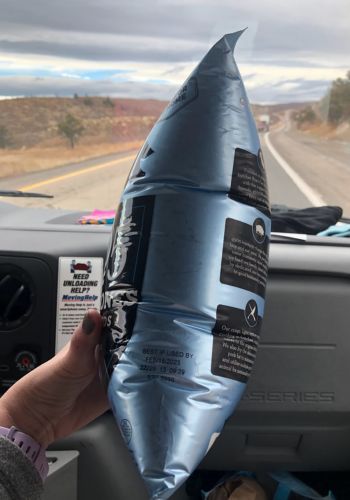
7. Mountain Traffic Delays in Busy Season
As a local who lives in the mountains of Colorado, I love the beauty and tranquility of nature. I enjoy hiking, biking, and camping in the wilderness. I also appreciate the small-town vibe and the friendly community of my neighbors. I want everyone to respect and enjoy the things I love about Colorado as much as I do. However, there is one thing that I dread: the mountain traffic delays during the busy season.
The main highway that connects Denver to the mountains is Interstate 70. It is a two-lane road for most of its length, with some sections having three lanes or express lanes. It is also prone to accidents, closures, and congestion. During the busy season, it can take hours to travel a few miles on I-70. Sometimes, it can take longer to drive back to Denver than to fly to another state.
You can get updated info on traveling I70: TRAVEL FORECAST :: goi70
The mountain traffic delays also affect the environment that we all seek to enjoy. They create noise and smog, which hurt the wildlife and the scenery. They also raise the danger of wildfires, avalanches, and landslides, which can wreck the infrastructure and the ecosystem. They also lead to overcrowding and overuse of natural resources, which can ruin the trails, campsites, and parks.
Consider visiting Colorado in the off-season to avoid slowdowns and lines. Colorado has become a popular destination in the summer and for good reason. There is plenty to do here in the fall and winter as well. Depending on what activities you are interested in, planning and having realistic expectations of the extra time it may take for your destination will help you enjoy your trip.
9. 14ers in Colorado
A 14er or “Fourteener” is a mountain peak over 14,000 feet of elevation. Colorado has the most of any state in the U.S. with 58 named 14ers.
There is some debate if a few of them count. To qualify as a 14er, a peak must rise at least 300 feet above the lowest point that connects it to a higher peak nearby. This is called the prominence of the peak. This rule has been used in Colorado for a while. 5 peaks on this 14er list are not ranked by this rule because they have less prominence. But they are still on the list because USGS maps have names for them. Because of this rule, some determine there are only 53. Regardless of your perspective, that is a lot!
Doing a 14er is on my list of things I want to do in Colorado. It takes a lot of preparation and is not something you can just do on a whim. The tallest peak I have climbed in Colorado is the Ice Lake Basin trail in the San Juan Mountains which is in the 12,0000 range. I did it in 2020 when I was in much better shape than now and it is my favorite hike that I have done in Colorado to date.
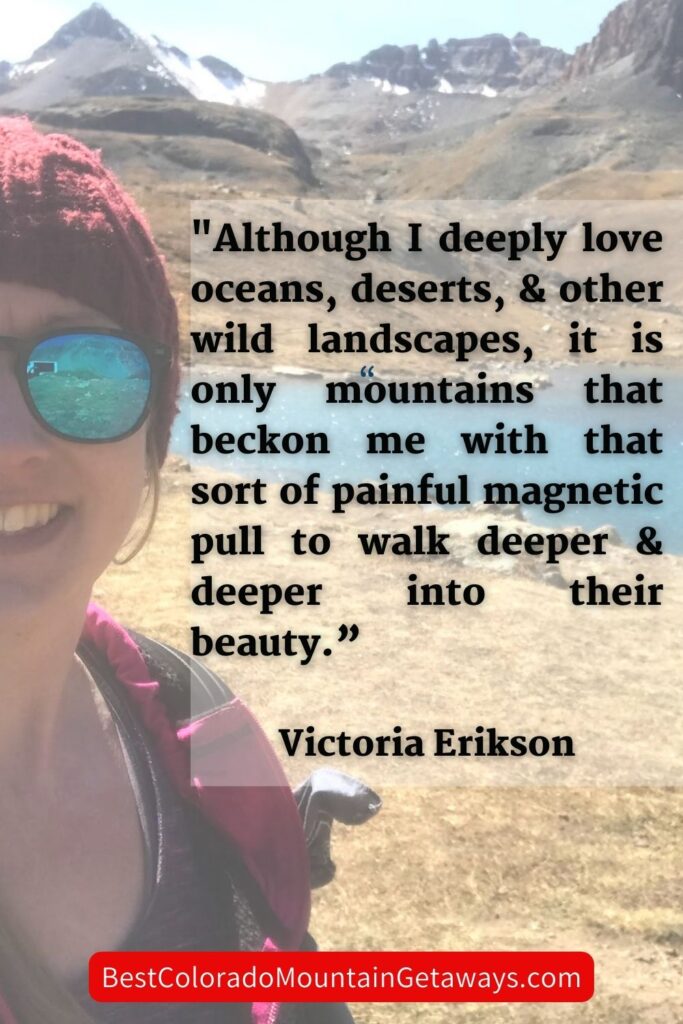
There is a ton of information out there to help you prepare such as 14ers.com or summitpost.org. Here are a few basic tips in summary for you to consider.
Pick a suitable peak. Some 14ers are harder than others. They can be technical, steep, or exposed. Find a peak that fits your skills and experience. Some of the easiest ones are Mount Bierstadt, Quandary Peak, Grays Peak, and Torreys Peak.
Learn about the hike. You should know what to expect before you hike a 14er. You should know how long it is, how high it is, how hard it is, what it looks like, and how long it takes. You should also know what the weather will be like, what the trail will be like, and what the rules are.
Choose the right time. The weather and the trails are better from July to September, so that’s the best time to hike a 14er. Winter and spring are too dangerous because of avalanches and snowstorms.
Drink and eat well. Hiking a 14er is hard work and can make you dehydrated and sick from the altitude. You should drink a lot of water before and during your hike, and eat food that gives you energy and electrolytes. You should also stay away from alcohol and caffeine, which can make you lose water and breathe harder.
Dress and pack well. The weather and the temperature can change a lot on a 14er, so you should wear clothes that you can change as needed. You should also pack the things you need for hiking, such as a map, a compass, a flashlight, a first aid kit, a knife, a fire starter, a whistle, more food and water, more clothes, and sun protection.
Be early and quick. The biggest danger on a 14er is lightning, which can happen anytime after noon. You should start your hike before the sun rises and be off the summit by noon.
10. Bear Safety
I grew up in Iowa where we have cornfields and a lot of flat land. There were some mountain lion sightings in Iowa occasionally but no bear danger. To put things in perspective, the worst-case scenario of getting attacked by a bear is highly uncommon despite what you may have seen in tv or movies. Only 4 bear attacks have led to death in the state of Colorado. Bears and humans can coexist together if we have awareness and respect for how to respond to bears appropriately.

Black bears can be both black and various shades of brown. Colorado is home to an estimated 17,000-20,000 black bears. Most bears are in the mountains west of Interstate 25 which runs north & south from Denver through Colorado Springs to New Mexico. Bears are seen in neighborhoods in Colorado Springs are other cities along the interstate.
One of the fascinating things about bears is their incredibly heightened sense of smell. Bears can smell food from up to 5 miles away. They can even pick up on the sweet scents from sunblock, lotions, and toiletries. Bears’ diet consists of eating fruit, berries, nuts, and plants as their primary food sources.
Bears naturally will keep their distance from humans unless they learn to connect humans to reliable food sources. When bears detect a new trace of food it attracts them to areas like campsites. This is why it is very important to be mindful of food and trash storage when you are in bear country by keeping it locked away. Never feed or leave food out for bears!
Bears that become too familiar with people become dangerous and must be destroyed for safety reasons. This is tragic for the bear population and we should all do our part to protect them so we can live together harmoniously in this beautiful state.
If camping, you should cook & store all your food at least a hundred yards from your campsite and change clothes after cooking. You can store cooking clothes with your food locked in airtight or bearproof containers in your vehicle at night. Keep all toiletries locked in your trunk overnight as well. Do not sleep in clothes that you cooked with because bears will smell them and keep your campsite clean.
Avoid surprising a bear on the trail. Bears can smell and hear you before you know they are there and will avoid humans. It is important to make noise while hiking so bears are aware of your presence, and you do not startle them. You should not wear headphones on a trail.
If you see a bear, do not run or try to climb a tree. While some recommend bear spray, we recommend getting an airhorn. Bears will usually avoid people if they hear noise and an airhorn will scare it away while bear spray may just make it angry. The bear will acknowledge your presence and should go on its way. If you see a bear with cubs, leave the area immediately.
In the worst-case situation, if you surprise a bear and they are threatening, you will need to get big and raise your voice, make lots of noise, and as a last resort fight the bear with whatever you have available (rocks, sticks, hiking poles, etc.).
For references on bear safety and more information on bears in Colorado visit Be Bear Aware while Camping & Hiking in Colorado (state.co.us)
11. Red Dirt Stains
If you are from a state that doesn’t have red dirt, it is beautiful to experience it here. But be aware that red dirt stains are permanent. You can minimize the effects by washing your shoes or clothing as soon as you are able. Travel-size Clorox wipes can help if you use them immediately. Since it may not be feasible for you to wash and dry shoes easily while on vacation, consider it a memory on your trip.
I knew about this before moving to Colorado, but I made a rookie mistake at Garden of the Gods by wearing my white Nikes and this was the result:
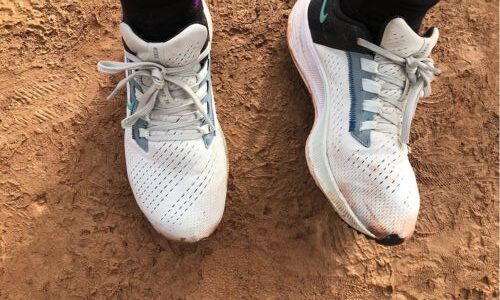
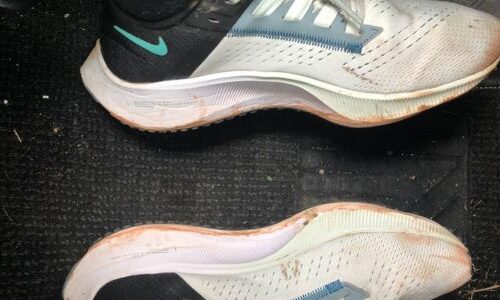
12. Marijuana
Marijuana is legal medicinally and recreationally in Colorado and has been for over ten years. Marijuana purchased in Colorado must stay in Colorado. It is against the law to transport marijuana across state lines, and it is not allowed in airports. Marijuana is also not legal in any state park. There are a lot of laws about where you can use marijuana as well. Be aware of what is allowed at your vacation rental property or Airbnb.
For more information and facts on marijuana use and travel you can refer to Driving and traveling | Colorado Cannabis
13. Bring Your Own Bag
Colorado is a bring-your-own-bag state as of January 1, 2023. Many stores no longer offer plastic bags and you will be charged a bag fee of 10 cents per bag. You can also awkwardly carry all your random items out of the store like many of us do because it’s hard to remember sometimes. Reusable bags are a great option that helps save the environment and keep our state beautiful. For your convenience, pack a few reusable bags especially if you plan on doing some grocery shopping or you can buy one here as a keepsake for your trip.
Bag Fees | Department of Revenue – Taxation (colorado.gov)
14. Rocky Mountain Oysters
This fun topic might not be what you expect. Surprised to see an item on the menu that at first glance appears to be seafood? Read a little further into the description. The “oysters” in the Rocky Mountains are from cattle, an animal found grazing abundantly across the state. Rocky Mountain Oysters are bull testicles that are served breaded, seasoned, and fried. Other names for them include meatballs, prairie oysters, calf fries, and cowboy oysters.
You can find them as an appetizer at many restaurants across the state, mostly in smaller mountain towns. We had them recently from Deerhammer Distillery in Buena Vista.
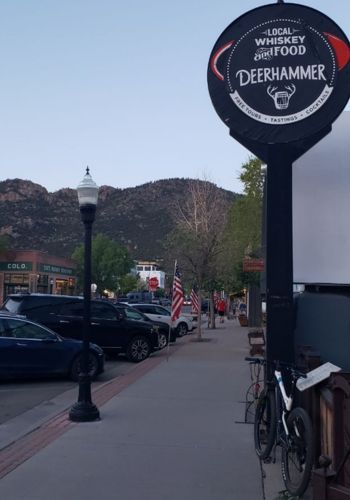
15. Big Foot in Colorado
Is there an elusive creature hiding in Colorado’s remote mountains referred to as Big Foot or Sasquatch? Is he a real being or just a bunch of rumors and embellished tales that have been dispelled a long time ago? The mystery has captivated many living in and visiting Colorado.
I am not an expert on the topic, but I find it very intriguing. As crazy and unpredictable as the wind and weather are in the Colorado mountains, it might be possible for Sasquatch to exist there without us fully being able to identify him.
There are hundreds of alleged sasquatch sightings reported and even a website of researchers dedicated to the topic. A majority of Big Foot sightings are in the Pikes Peak region between Colorado Springs and Denver. Pikes Peak even has a sign warning people of Big Foot sights in the area.
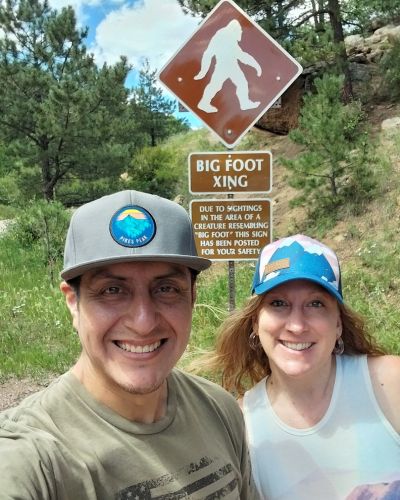
You will notice bumper stickers, décor, and Colorado memorabilia across the state of Big Foot. Our favorite local business that references Big Foot is Sasquatch Cookies in Colorado Springs. There are three locations in Colorado Springs with delicious baked fresh cookies and Sasquatch memorabilia.
In Closing:
I hope this list of 15 things to know for first-time travelers to Colorado has been helpful and informative. Colorado is a wonderful state with so much to offer, from stunning natural beauty to vibrant culture and history. Whether you come for the mountains, the cities, the food, the beer, or the people, you will find something to love and enjoy here. As a local, I welcome you to explore and experience Colorado with respect and curiosity. I’m sure you will have an amazing time and make unforgettable memories. Have a great trip and see you soon!
Cheers! Leah
